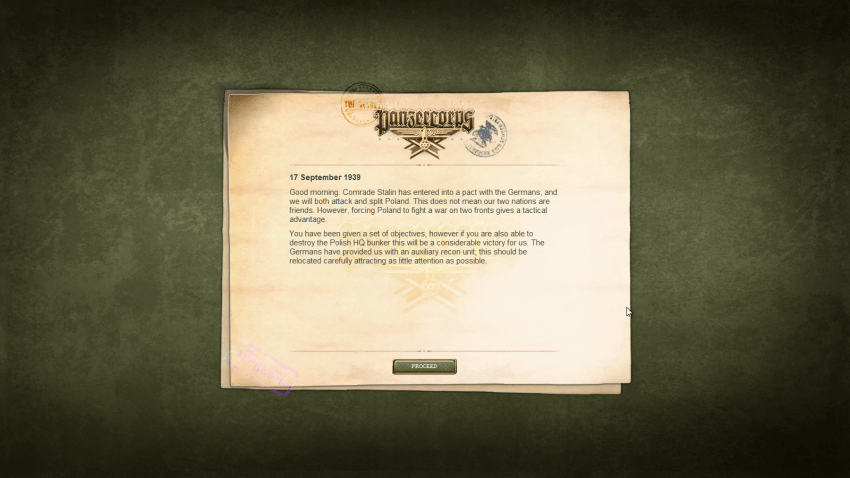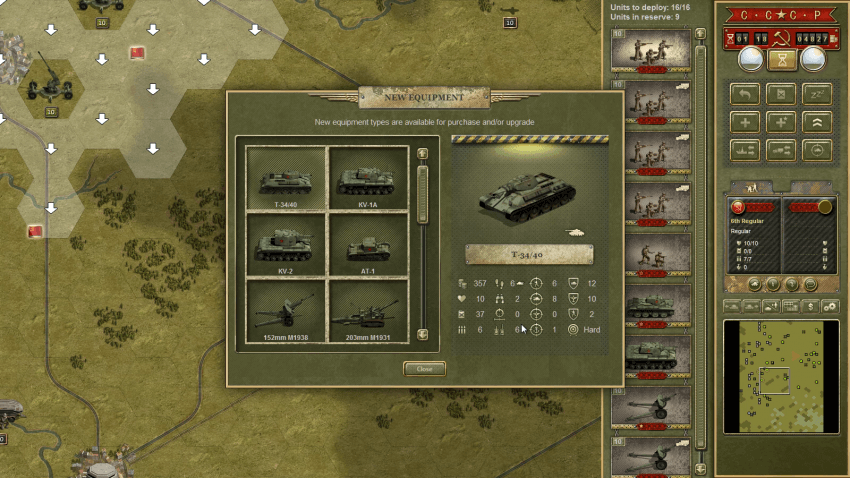Review | Panzer Corps: Soviet Corps
Panzer Corps: Soviet Corps is a long anticipated expansion for Panzer Corps which sees you commanding the Russian forces in some of their most important – and infamous – conflicts of World War II.
Panzer Corps, Slitherine’s heavily Panzer General inspired turn based tactical title, originally launched back in 2011. Since then it’s received over ten expansions taking the game from a tree-structured 26 mission exploration of the Wehrmacht’s efforts during WWII to a combined 200+ scenario, 800+ unit exposé into nearly all of the Western European conflict.
It’s odd to have the core game address the Eastern-European theatre, but never return there despite a mass of content drops. This is finally remedied with Soviet Corps.

Soviet Corps concerns itself with the efforts of the Red Army, from the division and occupation of Poland, through Operation Barbarossa – the deadliest front of the entire conflict – to the counter-attacks of the Russian forces up to the end of the war. 26 scenarios are structured, as with the great campaigns, into a campaign tree which sees you taking on missions relative to your successes and failures.
Operation Barbarossa notoriously saw the German forces push beyond the Soviet’s buffer of Poland, through the Baltic states, and generally eastwards on towards Moscow. The tables turned at that point, and both fronts saw major counter-attacks through a few decisive battles. Both fronts flipped and the unified, strengthened allies moved forwards on to Berlin. The expansion, as with the core game, goes a step forward should you manage to excel at the later missions in the game, leading to you reaching beyond Berlin in your counter-attack, and moving to capture the rest of the continent.
With all of the changes between offensive and defensive play there’s a lot more gameplay based around holding the line, and sustaining your forces throughout enemy reinforcements. The scenario revolving around Stalingrad (an extremely unexpected defence that further caused the German advances to balk) is a particularly good showcase of this as your core forces start at the extent of a fog of war, most of them six or seven hexes from the reaches of the city you’re meant to defend. The combat starts out as a typical defensive set up, with less enemy forces in sight than you have deployed troops, a few turns in however you’re wise to fall back to the defences the cities terrain offer your infantry forces as enemy forces pour from the fog.

Moments like this are wonderfully executed in this new campaign, and, unlike the earlier couple of missions which can be managed as simple blitz style invasion, you’ll find yourself leapfrogging your artillery and support as you have to react much more to the vastly more numerous enemy forces. Level design and scenario planning deserve a lot praise in this department as certain levels are deliberately set out to lure you down easier routes, or to split your troops. An early memorable level (possibly second, or third) was the invasion of Finland. The level started with your troops already forward for engagement and within reach of engaging enemy front line defenses. The immediate issue you have to face is that the enemies hold superior ground, but also that your troops are already essentially divided and forced to fight on multiple fronts.
The campaign introduces several new troop types, as up until now the USSR has only featured as an AI or multiplayer faction. Now they have a little over 60 troops, covering a lot of the nations core troops as well as a few experimental weapons which never saw the flames of battle. There’s a few other nations featured in the game – including some surprises, as the USSR were obviously facing more than German/Italian forces. These also have troops cycled into the game.

I don’t have much in the way of complaints about Soviet Corps, my only real misgiving about the expansion is that the earlier scenarios, when the USSR had more fielded troops and reserves, should have possibly been a bit more generous with the auxiliary troops – this would have given players a bit more freedom with their core troops. That said, doing this might have widened the difficulty curve – which is already pretty extreme when you hit Operation Barbarossa, and your core troops are extremely vulnerable as you hold off, or push against bigger waves of foes.
Soviet Corps is a fantastic expansion – it’s got the same amount of content as the core game had when it launched all those years ago. Yet it is set in a completely different theatre with a mass of new units. Owners of Panzer Corps should definitely grab it, and for those well-read on the Eastern European theatre it’s well worth looking into as well, as the game is extremely historically accurate, from unit types to scale of battle.
Comments are closed.